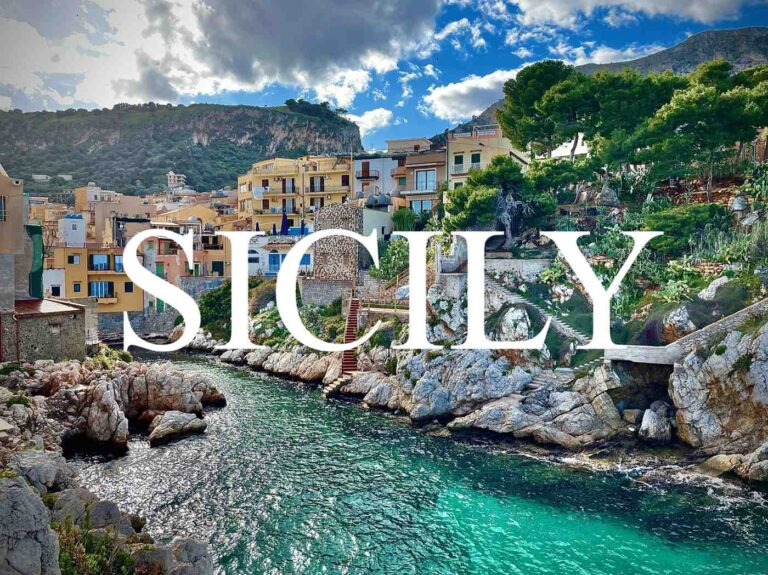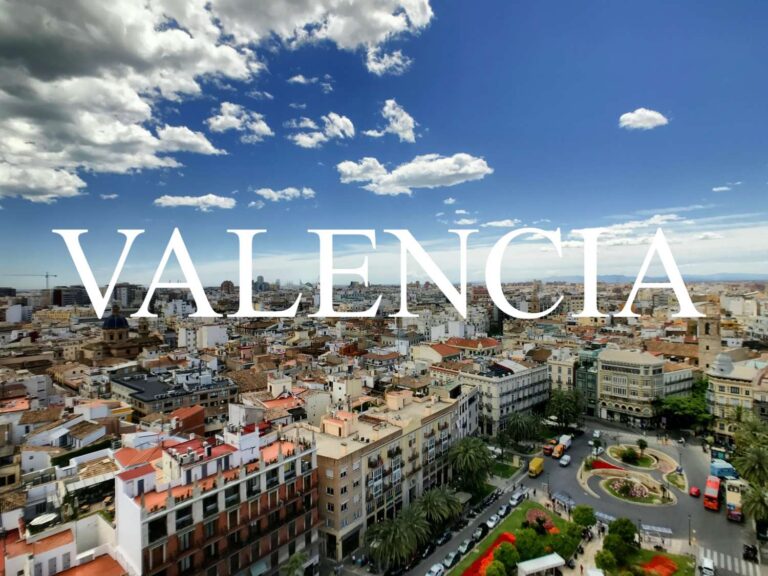
Costa Rica, known as the “Rich Coast,” is a dream destination for travelers who crave wild beauty, outdoor adventure, and cultural connection. With its vibrant rainforests, active volcanoes, unspoiled beaches, and one-of-a-kind wildlife, this Central American country offers endless opportunities for exploration and awe.
Over 25% of the country is protected land, making it one of the world’s leading eco-tourism hotspots. Explore the mysterious cloud forests of Monteverde, hike through the dramatic trails of Arenal Volcano National Park, or unwind on the sandy shores of Manuel Antonio and Tamarindo. From sloths sleeping in treetops to scarlet macaws flying overhead, every moment feels like a scene from a nature documentary.
Adventure is everywhere. You can zipline through jungle canopies, surf warm Pacific waves, go white-water rafting down thrilling rivers, or soak in geothermal hot springs. If you’re looking for a slower pace, enjoy a fresh coconut on the beach, take a wildlife boat tour through mangroves, or enjoy the rhythm of local life in charming towns and villages.
What truly makes Costa Rica special is the spirit of “Pura Vida”—a way of life that emphasizes simplicity, happiness, and gratitude. It’s more than just a greeting; it’s how people live. Whether you’re a solo traveler, couple, family, or group of friends, you’ll be welcomed like family and leave with unforgettable memories.
🗓️ Best Time to Visit Costa Rica
The best time to visit Costa Rica is during the dry season, from December to April. This period offers plenty of sunshine, making it ideal for beach trips, hiking, and wildlife spotting.
- Dry season (Dec-April): Warm, sunny days perfect for outdoor adventures and festivals.
- Green season (May-November): Expect more rain, especially in afternoons, but the landscapes are lush, crowds are thinner, and prices can be lower. The “green season” is still a great time for surfers and those who enjoy fewer tourists.
💰 Currency and Practical Info
- Currency: Costa Rican Colón (CRC)
- Language: Spanish is official; English is widely spoken in tourist areas.
- Transport: Renting a car is popular for flexibility, but buses and shuttles also connect major spots.
- Daily Budget:
- Budget travelers: $30–$60 USD
- Mid-range: $60–$120 USD
- Luxury: $120+ USD
🌟 Top 10 Best Places to Visit in Costa Rica
Arenal Volcano National Park

Nestled in the lush highlands of northern Costa Rica, Arenal Volcano National Park is a captivating landscape of natural power and tropical beauty. Home to one of the country’s most iconic volcanoes, the park offers an exhilarating blend of adventure, biodiversity, and breathtaking scenery. Whether you’re seeking heart-pounding hikes, geothermal hot springs, or up-close encounters with Costa Rica’s wildlife, Arenal is a must-visit destination for nature lovers and thrill-seekers alike.
🌟 Highlights of Arenal Volcano National Park
• 🌋 Arenal Volcano
Towering at 1,670 meters, Arenal Volcano is the centerpiece of the park. Though currently in a resting phase, its near-perfect cone shape and past volcanic activity create a dramatic backdrop. Observation points offer panoramic views of the volcano and the surrounding rainforest.
• 🌿 Diverse Trails and Hiking
Explore well-maintained trails like Las Coladas and El Ceibo, which wind through old lava flows, secondary forests, and scenic viewpoints. The trails cater to various fitness levels and provide opportunities to spot monkeys, toucans, and exotic plant life.
• 💧 Hot Springs and Thermal Waters
Thanks to geothermal activity, the area is rich in natural hot springs. Relax in therapeutic thermal pools at local resorts like Tabacón or EcoTermales, surrounded by tropical gardens and the sounds of nature.
• 🦜 Rich Biodiversity
The park is a haven for wildlife enthusiasts, home to more than 850 bird species, sloths, coatis, and howler monkeys. Early morning and dusk are ideal times for animal sightings.
• 🛶 Arenal Lake and Adventure Activities
Adjacent to the park, Lake Arenal is perfect for kayaking, fishing, and windsurfing. Adventure lovers can also enjoy zip-lining, canyoning, and white-water rafting in the surrounding region.
🚗 How to Get There
• By Car:
From San José, drive approximately 3.5 hours northwest via Route 1 and Route 142 to reach La Fortuna, the nearest town to the park.
• By Shuttle or Bus:
Daily shuttles and buses operate between San José and La Fortuna, making it a convenient option for travelers without a rental car.
• By Tour Package:
Many local tour companies offer day trips or multi-day packages including transportation, park entry, and guided tours.
🕒 Visitor Information
• Opening Hours:
Arenal Volcano National Park is open daily from 8:00 AM to 4:00 PM. Early visits are best for cooler temperatures and better chances of seeing wildlife.
• Entry Fee:
General admission is around $15 USD for international visitors. Guided tours may have additional costs.
• Recommended Visit Duration:
Spend 4–5 hours hiking and exploring the park, and plan additional time for soaking in hot springs or nearby adventures.
💡 Travel Tips
• 🥾 Wear Appropriate Footwear:
The trails can be muddy or uneven, especially during the rainy season—hiking boots or sturdy shoes are essential.
• 📸 Bring a Camera or Binoculars:
The wildlife and landscapes are incredibly photogenic. Don’t miss a chance to capture the moment or zoom in on rare birds.
• 🌧️ Prepare for Rain:
This is a tropical region—carry a lightweight rain jacket and dress in breathable layers.
• 🧭 Use a Local Guide:
A guided hike offers deeper insights into the park’s volcanic history and ecological significance, and increases your chances of wildlife sightings.
Arenal Volcano National Park is a thrilling blend of raw natural energy and serene tropical beauty. Whether you’re hiking hardened lava fields, soaking in steamy hot springs, or spotting wildlife in the treetops, every moment in Arenal feels alive. It’s not just a destination—it’s an unforgettable experience in the heart of Costa Rica’s wild wonderland.
Monteverde Cloud Forest Reserve
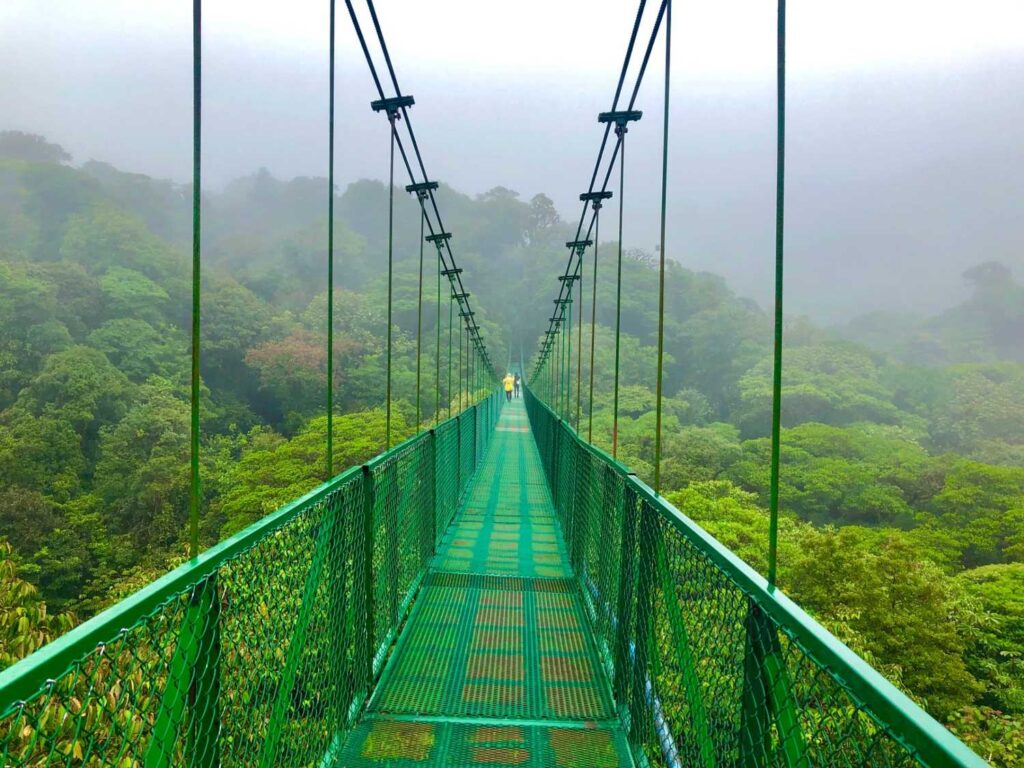
Tucked high in the misty mountains of Costa Rica’s Cordillera de Tilarán, the Monteverde Cloud Forest Reserve is a true ecological wonder and a dream destination for nature lovers, birdwatchers, and eco-travelers. Famed for its surreal cloud-covered canopy, astonishing biodiversity, and commitment to conservation, Monteverde offers a magical, almost otherworldly experience that immerses you in the heart of a living, breathing forest. It’s not just a place—it’s a journey into the soul of the rainforest.
🌟 Highlights of Monteverde Cloud Forest Reserve
• 🌳 Biodiverse Rainforest Ecosystem
Wander through trails shaded by towering trees draped in moss and epiphytes. With over 2,500 plant species, 100+ mammals, and more than 400 bird species, Monteverde is a biodiversity hotspot where every turn reveals a new marvel of the natural world.
• 🐦 World-Class Birdwatching
Keep your eyes (and binoculars) open for the elusive Resplendent Quetzal, one of the world’s most beautiful birds. Monteverde is also home to toucans, hummingbirds, and the iconic bellbird, making it a paradise for birdwatchers.
• 🌫️ Mystical Cloud Canopy Views
Experience the surreal beauty of the clouds floating through the forest canopy. Suspension bridges offer panoramic views from above the treetops, creating unforgettable moments surrounded by mist and melody.
• 🚶 Scenic Hiking Trails
With trails ranging from easy walks to more challenging treks, Monteverde caters to all levels of hikers. Highlights include the Sendero Bosque Nuboso and the La Ventana viewpoint, where you can see the continental divide.
• 🌿 Sustainable Ecotourism
Monteverde is a model for conservation and responsible tourism. From local organic farms to educational nature centers, every aspect of your visit supports the preservation of this unique environment.
🚗 How to Get There
• By Car or Shuttle:
Monteverde is about 3.5–4 hours from San José. Though the final stretch involves a bumpy road, the scenic journey is part of the adventure. 4×4 vehicles are recommended.
• By Bus:
Public buses run daily from San José and other major towns to Santa Elena, the closest town to the reserve.
• By Tour:
Several tour companies offer day trips or overnight packages that include transportation, guided hikes, and accommodations.
🕒 Visitor Information
• Opening Hours:
Open daily from 7:00 AM to 4:00 PM. Arriving early allows more time to explore and a better chance to spot wildlife.
• Entry Fee:
General admission is around $25 USD for adults and $12 USD for students and children. Guided tours are available for an additional fee.
• Recommended Visit Duration:
Spend at least 3–5 hours exploring the reserve. A full day is ideal if you’re combining trails, a canopy tour, and a visit to nearby attractions.
💡 Travel Tips
• 🎟️ Book Guided Tours in Advance:
A local naturalist guide can help you spot hidden wildlife and share fascinating insights into the forest’s ecology and history.
• 🧥 Dress in Layers:
The cloud forest can be cool, damp, and unpredictable. Bring a waterproof jacket and wear comfortable, sturdy footwear.
• 📷 Bring a Camera or Binoculars:
Wildlife sightings can happen in a flash—don’t miss a chance to capture the magic.
• 🌱 Support Local Conservation:
Buy from local artisans, eat at eco-friendly restaurants, and follow “leave no trace” principles to help preserve the reserve.
Monteverde Cloud Forest Reserve is a sanctuary of serenity, science, and soul. Its thick mists, whispering trees, and symphony of wildlife awaken a deep connection to nature. Whether you’re crossing hanging bridges or listening to the distant call of a quetzal, Monteverde promises a profound and unforgettable escape into one of the most enchanting ecosystems on Earth.
Manuel Antonio National Park
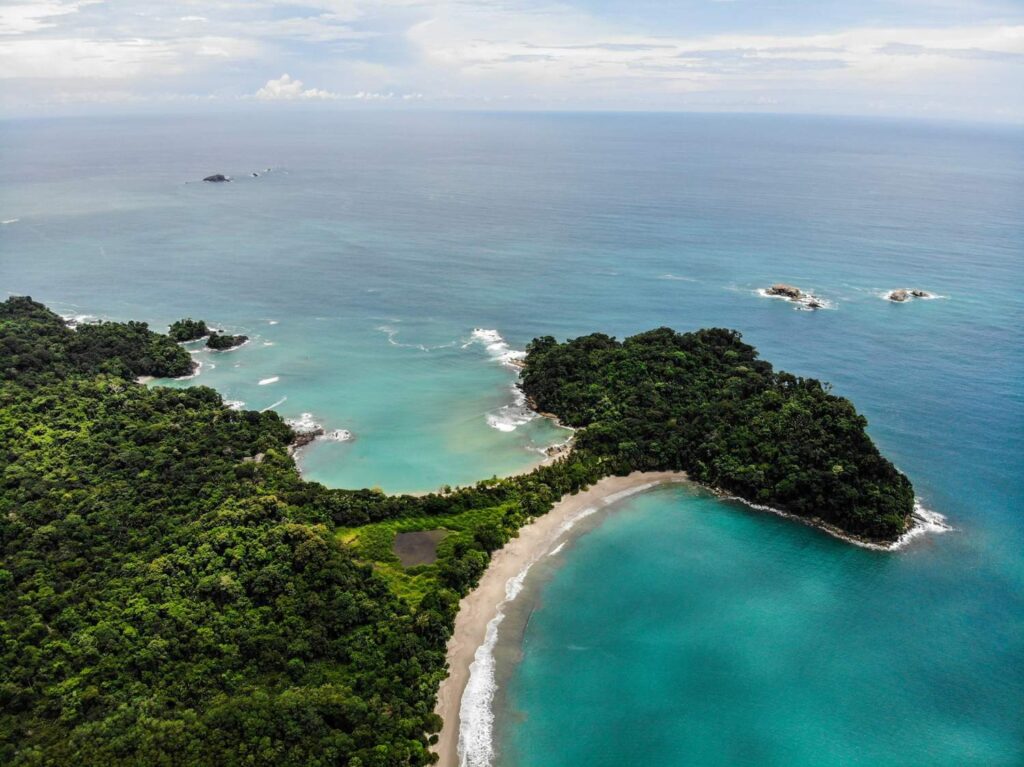
Photo by Atanas Malamov on Unsplash
Tucked along Costa Rica’s stunning Pacific coast, Manuel Antonio National Park is a vibrant oasis where lush rainforest meets pristine white-sand beaches. Though it’s the smallest national park in the country, it’s one of the most biodiverse and beloved, offering a perfect mix of wildlife encounters, scenic hiking trails, and idyllic coastal beauty. Whether you’re looking to relax, explore, or connect with nature, Manuel Antonio delivers an unforgettable tropical experience.
🌟 Highlights of Manuel Antonio National Park
• 🦥 Exotic Wildlife Watching
Get up close with Costa Rica’s iconic creatures, including three-toed sloths, squirrel monkeys, iguanas, toucans, and scarlet macaws. The park is teeming with life and offers some of the best wildlife viewing in the country—especially with a local guide.
• 🏖️ Pristine Beaches
Relax on postcard-worthy beaches like Playa Manuel Antonio and Playa Espadilla Sur. These white-sand shores are framed by jungle and offer calm waters perfect for swimming, snorkeling, and sunbathing.
• 🌿 Jungle Hiking Trails
Explore a network of well-marked trails that weave through rainforest and mangrove ecosystems. Popular routes include the Sendero Perezoso (Sloth Trail) and Sendero Mirador for spectacular coastal views.
• 🐾 Family-Friendly Adventures
Manuel Antonio is ideal for families, with gentle hikes, shallow beach areas, and guided nature tours that captivate both kids and adults.
• 🌊 Ocean Activities Nearby
Outside the park, enjoy water sports like surfing, kayaking, paddleboarding, and catamaran cruises that offer dolphin and whale sightings in season.
🚗 How to Get There
• By Car:
From San José, it’s about a 3-hour drive via Route 27 and Route 34. Parking is available outside the park entrance, but arrive early—spaces fill up quickly.
• By Bus:
Public buses from San José to Quepos (the nearest town) run daily. From Quepos, it’s a short local bus or taxi ride to the park entrance.
• By Shuttle or Tour:
Shared and private shuttles are available from major cities, or book a guided day tour with transportation included.
🕒 Visitor Information
• Opening Hours:
Open Tuesday to Sunday from 7:00 AM to 4:00 PM. The park is closed on Mondays.
• Recommended Visit Duration:
Plan for at least 4–5 hours to hike, explore, and unwind on the beaches. Bring snacks, water, and beachwear.
💡 Travel Tips
• 🧴 Pack Smart:
Bring sunscreen, insect repellent, reusable water bottles, and light breathable clothing. A swimsuit and towel are a must if you plan to swim.
• 📸 Use a Guide for Wildlife Spotting:
Local guides with spotting scopes can show you animals hidden in the trees—things you’d easily miss on your own.
• 🚫 No Food Inside the Park:
Food is not allowed in the park to protect wildlife and the environment. Eat beforehand or visit nearby restaurants in Manuel Antonio town.
• 🕊️ Respect Nature:
Stay on trails, don’t feed animals, and keep noise to a minimum—preserving this ecosystem depends on responsible tourism.
Manuel Antonio National Park is where jungle adventure meets coastal bliss. It’s a compact yet stunning showcase of Costa Rica’s natural treasures—wildlife, waterfalls, and waves all within reach. Whether you’re marveling at monkeys in the canopy or soaking in the sunset from a secluded beach, a day here is pure pura vida.
Tortuguero National Park
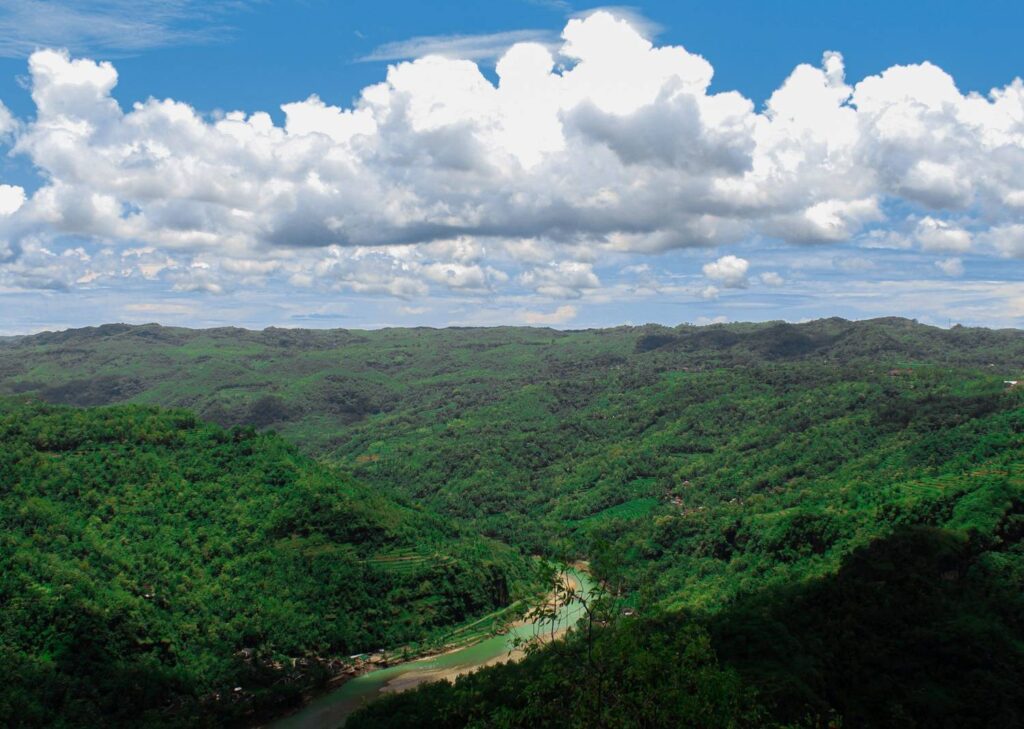
Hidden on the remote Caribbean coast of Costa Rica, Tortuguero National Park is a lush, water-bound paradise brimming with life and mystery. Nicknamed the “Amazon of Costa Rica”, this incredible park is accessible only by boat or small plane, making every visit feel like an expedition into an untouched jungle. Famous for its nesting sea turtles, winding canals, and rich biodiversity, Tortuguero offers a rare glimpse into one of the world’s most vibrant ecosystems.
🌟 Highlights of Tortuguero National Park
• 🐢 Sea Turtle Nesting (July–October)
One of the park’s biggest draws is the annual nesting of green sea turtles, the largest such colony in the Western Hemisphere. Night tours with certified guides let visitors witness this incredible natural event as turtles come ashore to lay their eggs under the moonlight.
• 🛶 Wildlife Canal Tours
Explore the park’s intricate network of canals, rivers, and lagoons by kayak or motorized boat. Along the way, you might spot monkeys, sloths, crocodiles, river otters, and over 300 species of birds.
• 🌳 Rainforest Hikes
In addition to water-based adventures, Tortuguero offers jungle hiking trails, where you can trek through dense tropical forests and observe the unique flora and fauna up close.
• 🦜 Birdwatching Paradise
From colorful toucans to herons and hawks, Tortuguero is a haven for bird enthusiasts. Early morning and late afternoon are prime times for spotting both resident and migratory birds.
• 🌊 Caribbean Coastline & Beaches
Walk the park’s black sand beaches, where you can experience serene sunrises or simply reflect in the quiet beauty of this undeveloped shoreline.
🚗 How to Get There
• By Boat:
The most common way to reach Tortuguero is via boat from La Pavona or Moín, with scenic river journeys through mangroves and canals.
• By Air:
Daily flights from San José to Tortuguero’s airstrip offer a quicker and more comfortable way to arrive, especially during the rainy season.
• By Tour Package:
Many eco-lodges and travel companies offer all-inclusive packages including transport, lodging, meals, and guided tours for a hassle-free adventure.
🕒 Visitor Information
• Opening Hours:
The park is open daily from 6:00 AM to 6:00 PM, but guided canal tours often start earlier to catch peak wildlife activity.
• Recommended Visit Duration:
Plan for at least 2–3 days to fully experience Tortuguero’s trails, boat tours, and turtle watching (in season).
💡 Travel Tips
• 🐢 Time Your Visit for Turtle Season:
If seeing turtles is a priority, plan your trip between July and October for nesting, or November to January to see hatchlings.
• 🧴 Pack Waterproof Gear:
Rain is frequent—even during the dry season—so bring a light rain jacket, waterproof bags, and quick-dry clothing.
• 🦟 Protect Against Mosquitoes:
Tortuguero’s wetlands mean bugs are plentiful. Bring insect repellent and consider lightweight long sleeves for comfort.
• 📚 Support Local Guides & Conservation:
Hiring local guides not only enriches your experience with deep knowledge but also supports sustainable tourism and conservation efforts.
Tortuguero National Park is not just a destination—it’s an immersion into raw, untamed nature. Whether you’re drifting through rainforest-lined canals, spotting exotic wildlife, or watching sea turtles nest under starlit skies, Tortuguero invites you to reconnect with the wild. It’s a powerful reminder of the beauty, fragility, and wonder of the natural world.
Corcovado National Park
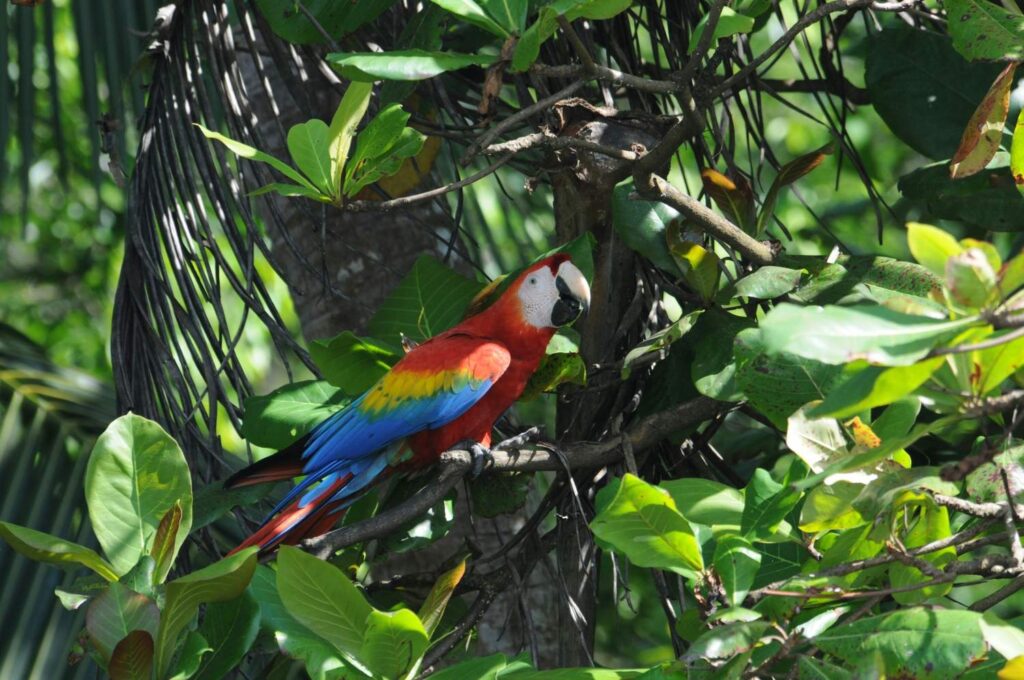
Photo by Richard Goggin on Unsplash
Located on the remote Osa Peninsula in southwestern Costa Rica, Corcovado National Park is often hailed as one of the most biologically intense places on Earth. Encompassing dense rainforests, rugged coastlines, and secluded beaches, this ecological treasure is a sanctuary for rare wildlife and a dream for adventurous travelers. Visiting Corcovado is not just a nature trip—it’s a deep dive into the heart of one of the last untouched rainforests in Central America.
🌟 Highlights of Corcovado National Park
• 🐆 Incredible Wildlife Diversity
Spot some of Costa Rica’s most elusive and endangered species—including jaguars, tapirs, scarlet macaws, howler monkeys, and even Baird’s tapir. With 500+ tree species, 140 species of mammals, and over 400 species of birds, the park is a biodiversity hotspot.
• 🌴 Remote Jungle Hikes
Hike through lush lowland rainforests, crossing rivers and muddy paths to reach ranger stations like Sirena, San Pedrillo, and La Leona. Each trail offers unique ecosystems and unforgettable wildlife encounters.
• 🏖️ Wild Beaches and Coastal Views
Corcovado’s untouched Pacific beaches, such as those near Sirena and San Pedrillo, offer serene, scenic spots where the jungle meets the sea. It’s not uncommon to see scarlet macaws flying over the shoreline or dolphins playing in the waves.
• 🦋 Birdwatching Paradise
Bring your binoculars—this park is a birder’s dream, featuring species like the crested eagle, great curassow, toucans, and countless hummingbirds.
• 🚶 Guided Expeditions
Due to the park’s remote nature and dense jungle, guided tours are required. Local naturalists bring the rainforest to life with their expert knowledge of its flora and fauna.
🚗 How to Get There
• By Boat from Drake Bay:
The most popular access point. Travel by boat from Sierpe to Drake Bay, then take a guided boat tour into the park, usually to Sirena or San Pedrillo stations.
• By Hike from Puerto Jiménez:
Adventurous travelers can hike from Carate to La Leona ranger station (8 km) and continue deeper into the park. This route offers multi-day trek options with overnight stays.
• By Plane:
Domestic flights from San José land in Drake Bay or Puerto Jiménez. From there, local tour operators organize park access.
🕒 Visitor Information
• Opening Hours:
Open daily from 7:30 AM to 5:00 PM, but visits must be arranged in advance and guided by certified professionals.
• Entry Fee:
Approximately $15–$20 USD per person, not including the cost of a mandatory guide and any lodging or transportation.
• Recommended Visit Duration:
Full-day or multi-day visits are ideal. Overnight stays at Sirena Ranger Station offer a rare opportunity to experience the rainforest after dark.
💡 Travel Tips
• 👣 Book in Advance:
Visitor numbers are strictly controlled. Book your permits, guide, and accommodations weeks or even months in advance—especially in peak season (Dec–Apr).
• 🥾 Be Physically Prepared:
Trails can be long, muddy, and challenging. Good fitness, proper hiking boots, and waterproof gear are essential.
• 🌦️ Visit in the Dry Season:
Travel between December and April for safer trails and better wildlife visibility. The wet season (May–Nov) can bring heavy rains and trail closures.
• 🦟 Pack Smart:
Bring insect repellent, sunscreen, a refillable water bottle, dry bags for electronics, and binoculars or a zoom lens for wildlife spotting.
Corcovado National Park is Costa Rica’s wildest frontier—a living laboratory of biodiversity and a sanctuary for species found nowhere else. It’s not the easiest place to reach, but for those who make the journey, it’s a life-changing immersion in one of the planet’s last truly wild rainforests. Raw, untamed, and awe-inspiring, Corcovado is a destination for the true adventurer.
Tamarindo Beach
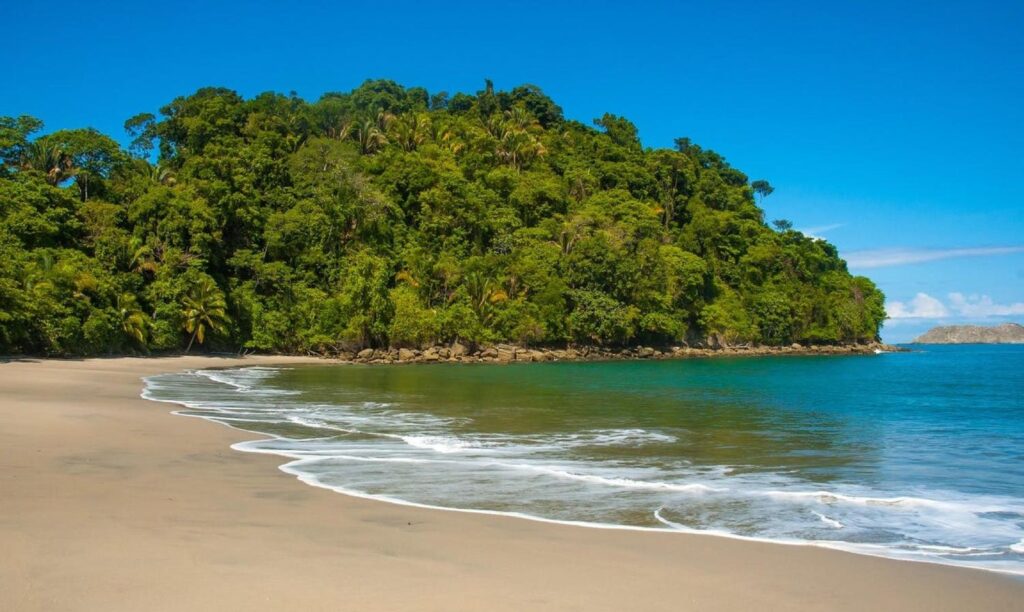
Nestled along Costa Rica’s sun-drenched Nicoya Peninsula, Tamarindo Beach is the perfect blend of tropical paradise and vibrant beach town. Known for its golden sands, consistent surf, and colorful nightlife, Tamarindo welcomes everyone from backpackers to families to luxury travelers. Whether you’re chasing waves, sipping cocktails at sunset, or spotting leatherback turtles, Tamarindo promises a relaxed and unforgettable coastal escape.
🌟 Highlights of Tamarindo Beach
• 🏄 World-Class Surfing
Tamarindo is a surf lover’s dream. With consistent breaks for both beginners and pros, popular spots like Playa Tamarindo, Playa Grande, and Playa Langosta offer endless opportunities to catch a wave or take a lesson from one of the many local surf schools.
• 🌅 Stunning Sunsets
Tamarindo is famous for its fiery Pacific sunsets that light up the sky in shades of gold, pink, and purple. Grab a beachfront seat and enjoy the view with a cocktail in hand—it’s a daily ritual not to be missed.
• 🐢 Turtle Nesting at Playa Grande
Just north of Tamarindo, Playa Grande is part of Las Baulas National Marine Park, a protected nesting ground for leatherback sea turtles. Seasonal night tours allow visitors to witness these gentle giants laying eggs on the beach.
• 🐬 Wildlife and Eco-Adventures
Explore nearby mangrove estuaries, take a boat tour to spot crocodiles, howler monkeys, and exotic birds, or head inland for a zip-lining, ATV riding, or hiking adventure through the dry tropical forests.
• 🍴 Great Food and Nightlife
Tamarindo boasts a thriving food scene with beachside seafood grills, international cuisine, and casual taco joints. After dark, the town comes alive with live music, fire dancers, beachfront bars, and salsa dancing.
🚗 How to Get There
• By Air:
Fly into Daniel Oduber Quirós International Airport (LIR) in Liberia, which is about 1.5 hours by car from Tamarindo. Shuttle services and car rentals are widely available.
• By Bus or Shuttle:
Daily buses and shared shuttles connect Tamarindo with San José and other major destinations.
• By Car:
Tamarindo is accessible via well-maintained roads; a rental car is convenient if you want to explore nearby beaches and towns.
🕒 Visitor Information
• Best Time to Visit:
Dry season (December to April) offers sunny skies and ideal beach conditions. Wet season (May to November) brings fewer crowds, greener landscapes, and excellent surf.
• Beach Access:
Tamarindo Beach is public and free to access, with plenty of beachside shops, restaurants, and surf rental stands.
• Recommended Visit Duration:
Plan for at least 3–5 days to surf, relax, and enjoy local excursions. Tamarindo also works well as a base for exploring Guanacaste.
💡 Travel Tips
• 🧴 Sun Protection is Essential:
The tropical sun is intense, so pack reef-safe sunscreen, a hat, and sunglasses to stay protected.
• 🏄 Try a Surf Lesson:
Even if you’re a beginner, Tamarindo’s gentle waves and friendly instructors make it the perfect place to learn.
• 🧘 Stay Active or Unwind:
From yoga on the beach to paddleboarding or deep-sea fishing, there’s something for every pace and interest.
• 💸 Bring Some Cash:
Most places accept credit cards, but it’s handy to have cash in colones or USD for small purchases or tips.
Tamarindo Beach is more than just a surf town—it’s a lifestyle. With its golden shores, laid-back energy, and endless adventure options, Tamarindo captures the spirit of pura vida. Whether you’re surfing your first wave, watching sea turtles nest, or simply soaking up the sun, Tamarindo invites you to slow down, smile more, and savor the simple joys of beach life.
Poás Volcano National Park
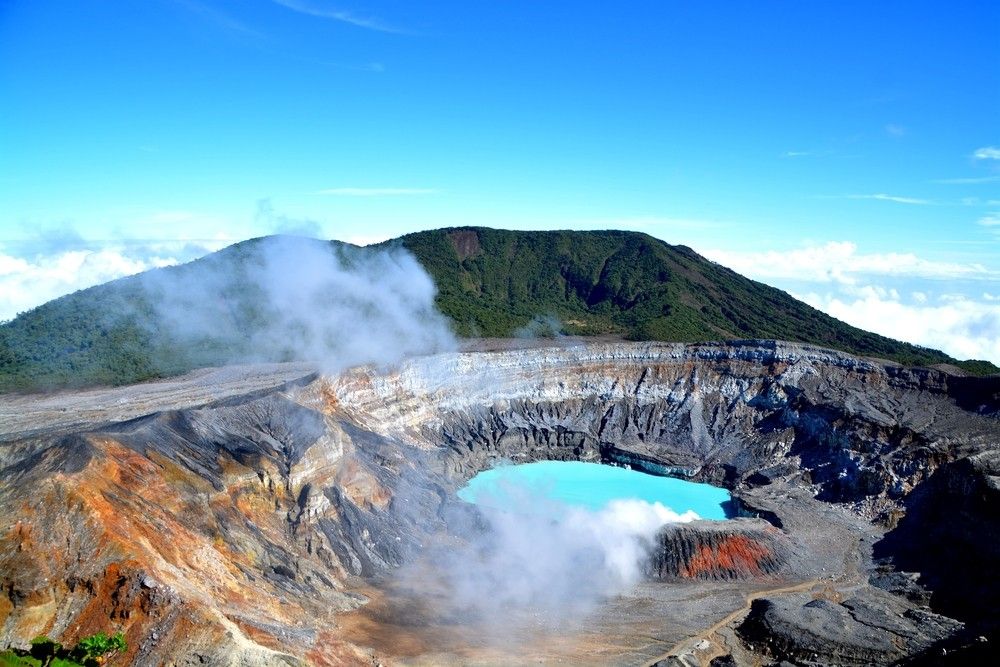
Just a short drive from San José, Poás Volcano National Park is one of Costa Rica’s most accessible and awe-inspiring natural attractions. Home to one of the largest active craters in the world, this park offers dramatic volcanic landscapes, cool cloud forest trails, and breathtaking views. A visit to Poás is a rare chance to peer directly into the Earth’s fiery core—without venturing far from civilization.
🌟 Highlights of Poás Volcano National Park
• 🌋 Active Volcanic Crater
Stand on the edge of the massive main crater—nearly 1.5 km wide—and witness its steaming fumaroles and bubbling turquoise crater lake. On clear mornings, you may catch the plume of gas rising against the blue sky, a stark reminder of the volcano’s raw power.
• 🌿 Botos Lagoon
Hike through a misty cloud forest trail to Laguna Botos, an extinct crater now filled with rainwater. This serene lake, surrounded by lush greenery and high-altitude flora, offers a peaceful contrast to the more active crater.
• 🐦 Birdwatching and Flora
Spot highland species like the resplendent quetzal, hummingbirds, and toucanets among the park’s unique flora, including poor man’s umbrella (Gunnera) plants with enormous leaves.
• 🚶 Easy, Scenic Trails
Well-maintained, paved walkways make the park family-friendly and wheelchair accessible. Trails offer both scenic and educational experiences about Costa Rica’s geothermal forces and biodiversity.
• 📸 Photography Paradise
With its dramatic landscape, rolling mist, and stark crater, Poás is a dream spot for nature photographers and geology enthusiasts alike
🚗 How to Get There
• By Car:
Just 1.5 to 2 hours from San José via Route 120 and Route 130. Parking is available at the visitor center.
• By Tour:
Numerous tour operators offer half-day or full-day guided trips from San José or Alajuela, often combining Poás with nearby attractions like coffee plantations or La Paz Waterfall Gardens.
• By Public Bus:
Limited bus service is available to the town of Poásito; from there, taxis or tours are needed to reach the park entrance.
🕒 Visitor Information
• Opening Hours:
Open daily from 8:00 AM to 4:00 PM, with the last entrance at 2:20 PM. Visits are restricted to 40 minutes at the crater due to volcanic activity and air quality controls.
• Recommended Visit Duration:
Plan for 1.5 to 2 hours to enjoy the crater viewpoint, trails, and visitor center. Combine with other nearby sites for a full-day trip.
💡 Travel Tips
• 🌤️ Arrive Early for Best Views:
Clouds often roll in by late morning. Aim to enter the park as soon as it opens to increase your chances of seeing the crater clearly.
• 🧥 Dress in Layers:
The high-altitude climate is cool and damp—bring a light jacket or raincoat and closed-toe shoes.
• 🎫 Book Tickets in Advance:
Entry is strictly limited and must be reserved online. Booking early ensures your preferred time slot.
• 🚫 No Food or Large Bags Allowed:
Security regulations prohibit large backpacks and outside food, so plan accordingly.
Poás Volcano National Park is a stunning, surreal encounter with nature’s raw energy and beauty—all within easy reach of Costa Rica’s capital. Whether you’re peering into its vast crater or strolling through its misty trails, the park offers a uniquely powerful and peaceful experience. It’s a must-visit for travelers seeking adventure, geology, or just a breath of cool mountain air.
Cahuita National Park
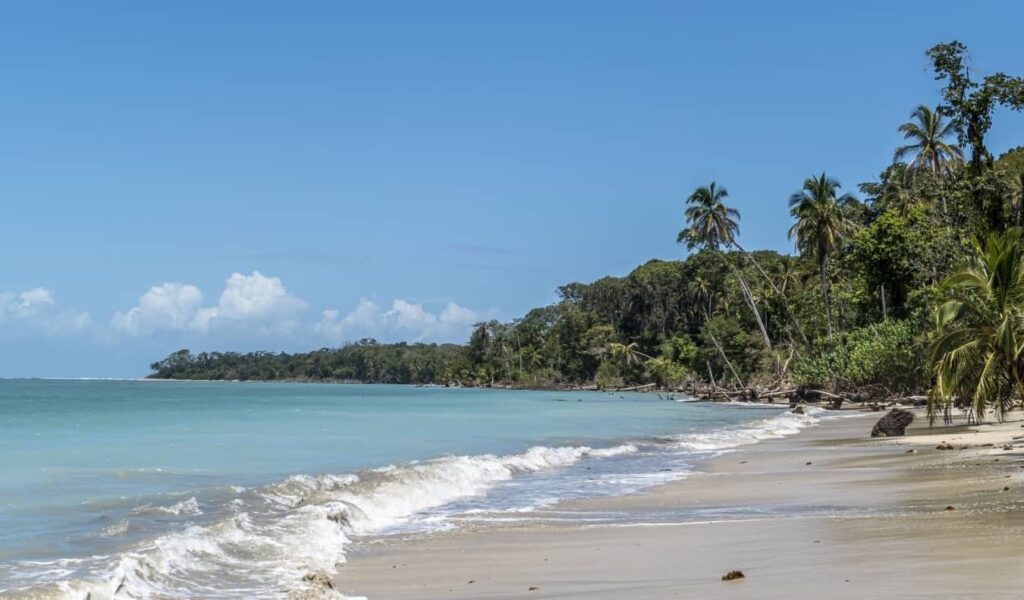
Located on Costa Rica’s laid-back Caribbean coast, Cahuita National Park is a tropical haven where white-sand beaches meet vibrant coral reefs and lush rainforests. Just a short walk from the colorful town of Cahuita, this park offers a unique blend of marine and terrestrial ecosystems, teeming with wildlife and natural beauty. It’s one of the few national parks in Costa Rica that runs on a donation-based entry system, making it not only breathtaking but also incredibly accessible.
🌟 Highlights of Cahuita National Park
• 🐠 Snorkeling in the Coral Reef
Cahuita is home to one of Costa Rica’s largest coral reef systems, featuring over 35 species of coral, sea turtles, tropical fish, and even reef sharks. Snorkeling tours (available seasonally) provide an incredible glimpse into this underwater wonderland.
• 🐒 Wildlife Along the Coastal Trail
The park’s 8-kilometer coastal trail is an easy and scenic walk where you can spot howler monkeys, white-faced capuchins, sloths, raccoons, coatis, iguanas, and dozens of colorful birds. It’s a must-do for wildlife lovers.
• 🏖️ Beautiful Caribbean Beaches
With soft white sand, calm turquoise waters, and swaying palms, the beaches in Cahuita are postcard-perfect. The most popular are Playa Blanca near the Kelly Creek entrance and Puerto Vargas Beach for a quieter experience.
• 🌿 Diverse Ecosystems in One Park
Cahuita uniquely combines mangroves, coastal forests, wetlands, and marine ecosystems, offering a dynamic experience that showcases Costa Rica’s incredible biodiversity in a compact, walkable area.
• 🛶 Kayaking and River Exploration
Explore the estuaries and rivers around Cahuita by kayak, where you can paddle through serene waters while spotting birds, reptiles, and more in a tranquil natural setting.
🚗 How to Get There
• By Car:
Cahuita is about 4–5 hours from San José via Route 32. The drive passes through Braulio Carrillo National Park and is incredibly scenic.
• By Bus:
Direct buses run daily from San José to Cahuita (around 4.5 hours). The bus drops you in the center of town, just a short walk to the park entrance.
• By Shuttle:
Shared shuttles offer comfortable and convenient transportation from San José or other Caribbean towns like Puerto Viejo.
🕒 Visitor Information
• Opening Hours:
The park is open daily from 8:00 AM to 4:00 PM. Last entry is usually around 2:30 PM.
• Recommended Visit Duration:
Plan for half a day to walk the trail and enjoy the beach, or a full day if combining hiking with snorkeling or kayaking.
💡 Travel Tips
• 🧴 Bring Reef-Safe Sunscreen and Insect Repellent:
Protect both your skin and the marine life by choosing eco-friendly products.
• 👟 Wear Comfortable Shoes or Sandals:
The trail is flat but can be muddy or sandy—sturdy sandals or sneakers work best.
• 🐢 Visit During Dry Season (Feb–April):
Water clarity is best for snorkeling, and wildlife sightings are frequent.
• 🎒 Pack Light but Smart:
Bring water, snacks, a hat, swimwear, and a camera—you’ll want to capture everything!
Cahuita National Park is a Caribbean treasure—a rare mix of reef and rainforest, teeming with wildlife and surrounded by natural beauty. Whether you’re snorkeling with tropical fish, watching monkeys swing through the trees, or simply lounging on the beach, Cahuita offers a peaceful, immersive experience in one of Costa Rica’s most authentic coastal communities. It’s not just a park—it’s a slice of pura vida you’ll never forget.
Santa Teresa
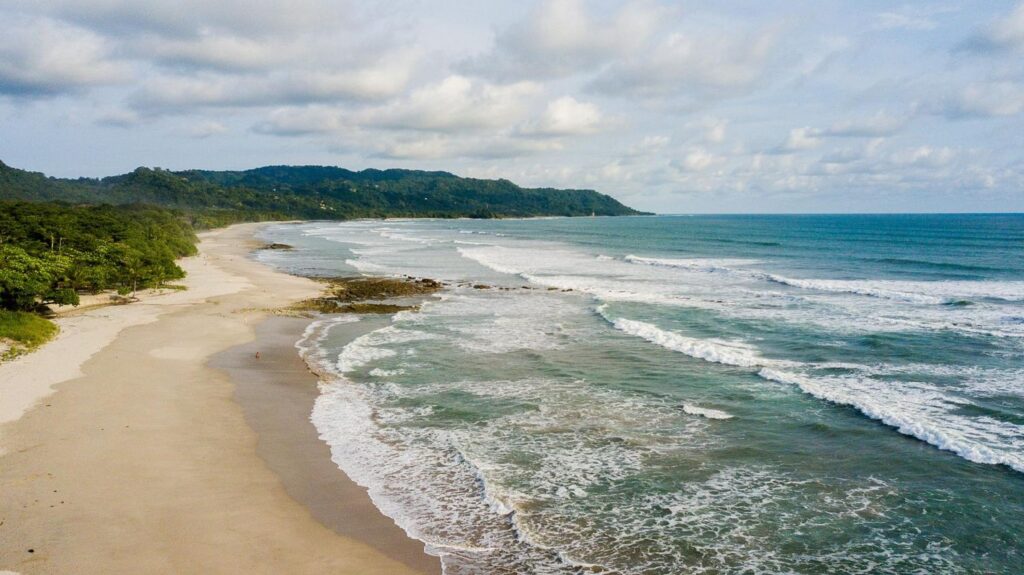
Once a sleepy fishing village, Santa Teresa has blossomed into one of Costa Rica’s most alluring beach destinations. Located on the Nicoya Peninsula’s Pacific coast, this laid-back town combines world-class surf, bohemian vibes, and raw natural beauty. With golden beaches, lush jungle backdrops, and a vibrant mix of wellness and adventure, Santa Teresa is perfect for travelers seeking both relaxation and excitement
🌟 Highlights of Santa Teresa
• 🏄 Surfing World-Class Waves
Santa Teresa is a surfer’s dream, with consistent waves year-round and breaks suitable for all levels. Popular surf spots include Playa Carmen (great for beginners) and Playa Santa Teresa (ideal for intermediates and pros). Surf schools and board rentals are plentiful.
• 🏖️ Stunning Beaches
Relax on wide, palm-fringed beaches with soft golden sand and unforgettable sunsets. Playa Hermosa offers a more tranquil vibe, while Playa Santa Teresa buzzes with beach bars and surf action.
• 🧘 Wellness and Yoga Retreats
Santa Teresa has become a hub for holistic living, with numerous yoga studios, meditation centers, and wellness retreats offering daily classes and multi-day packages.
• 🐒 Wildlife and Nature
Spot howler monkeys, iguanas, and tropical birds right from your hammock or while hiking in nearby jungle areas. Cabo Blanco Nature Reserve, just a short drive away, offers fantastic hiking and wildlife viewing.
• 🍴 Creative Cuisine and Nightlife
From fresh-caught seafood to vegan bowls and craft cocktails, Santa Teresa’s food scene is dynamic and diverse. Beachfront dining, sunset bars, and occasional live music create a relaxed yet lively nightlife.
🚗 How to Get There
• By Car (via Ferry):
From San José, drive to Puntarenas, take the ferry to Paquera, then continue by road to Santa Teresa (approx. 5–6 hours total). A 4×4 is recommended for local roads, especially in the rainy season.
• By Domestic Flight:
Fly from San José to Tambor Airport (about 30 minutes), then take a 45-minute taxi or shuttle to Santa Teresa.
• By Shuttle or Bus:
Daily shared shuttles and public buses operate from San José, offering a more budget-friendly option.
🕒 Visitor Information
• Best Time to Visit:
Dry season (December to April) offers the sunniest days and best surf. Green season (May to November) brings fewer crowds and lush scenery—just prepare for occasional rain.
• Local Services:
Santa Teresa has ATMs, supermarkets, boutique shops, and plenty of lodging—from budget hostels to luxury beachfront villas.
• Recommended Stay Duration:
Stay at least 3–5 days to enjoy surfing, yoga, and local excursions at a relaxed pace.
💡 Travel Tips
• 🏄 Try a Surf Lesson:
Even if you’ve never surfed before, local instructors make it easy to catch your first wave.
• 🥾 Explore Beyond the Beach:
Rent an ATV to explore nearby waterfalls, hidden beaches, and natural reserves like Montezuma and Cabo Blanco.
• 📶 Expect Limited Cell Service:
Wi-Fi is available at most hotels and cafés, but mobile signal can be spotty in some areas—embrace the digital detox!
• 💸 Bring Cash:
Many businesses accept cards, but some smaller shops and local restaurants are cash-only.
Santa Teresa is more than a beach town—it’s a state of mind. With its friendly community, awe-inspiring sunsets, and fusion of surf culture and sustainability, Santa Teresa invites you to slow down, soak in the pura vida spirit, and stay longer than you planned. Whether you’re chasing waves or simply chasing peace, this Pacific paradise delivers.
La Fortuna Waterfall
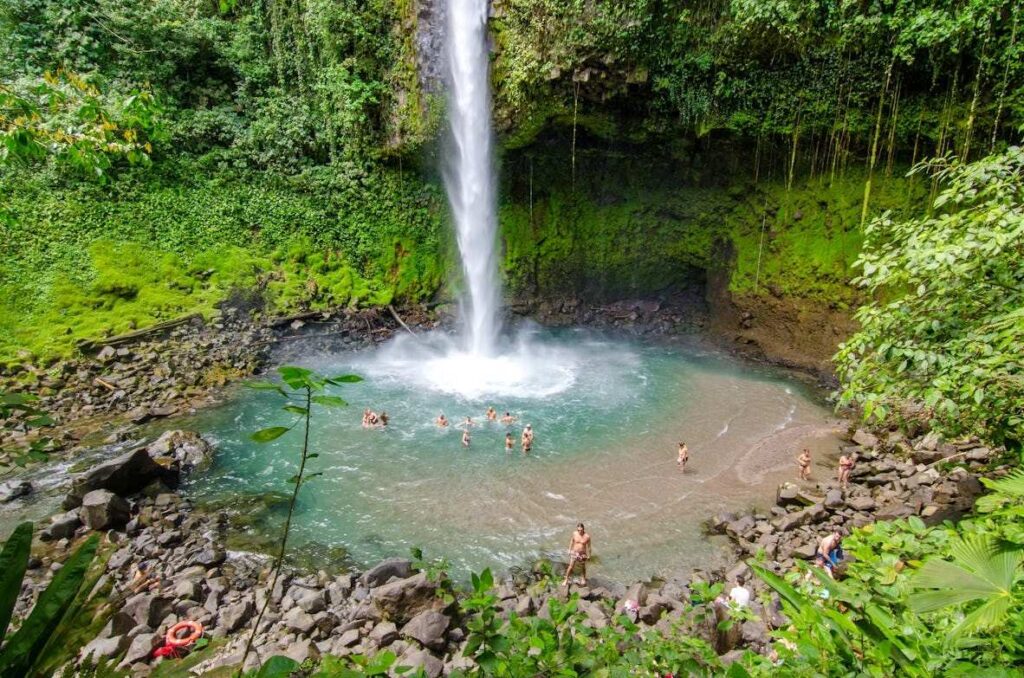
Nestled at the base of the Arenal Volcano and surrounded by lush rainforest, La Fortuna Waterfall is one of Costa Rica’s most iconic natural landmarks. Cascading nearly 75 meters (246 feet) into a deep turquoise pool, this stunning waterfall offers a powerful visual spectacle and a refreshing jungle escape. Whether you’re swimming in its cool waters or capturing that perfect photo from the viewing platform, a visit to La Fortuna Waterfall is a must on any Costa Rican adventure.
🌟 Highlights of La Fortuna Waterfall
• 💦 Towering Jungle Waterfall
La Fortuna Waterfall plunges dramatically into a volcanic canyon, creating a mesmerizing cascade. Surrounded by vibrant greenery and the sound of rushing water, it’s the perfect spot to feel nature’s raw power and beauty.
• 🏊 Swimming in the Natural Pool
At the base of the falls lies a refreshing natural pool where visitors can take a dip (with caution due to strong currents). A shallower area downstream is ideal for relaxing or letting kids splash around safely.
• 🌄 Scenic Hiking Trail
To reach the waterfall, you’ll descend about 500 steps through a well-maintained trail surrounded by rainforest. Along the way, interpretive signs and wildlife sightings (like toucans and butterflies) make the journey as enjoyable as the destination.
• 📸 Perfect Photo Opportunities
There’s a viewing platform near the top for panoramic shots of the waterfall, and plenty of chances to capture epic rainforest landscapes and waterfall selfies below.
• 🌿 Ecotourism & Conservation
Managed by the La Fortuna Development Association, entrance fees support local projects and conservation efforts—so your visit directly benefits the community and environment.
🚗 How to Get There
• By Car or Taxi:
La Fortuna Waterfall is located just 5–10 minutes from the town of La Fortuna. It’s accessible via a paved road, and there’s a parking area near the entrance.
• By Foot or Bike:
Adventurous travelers can hike or bike from La Fortuna town—it’s about 5.5 km (3.4 miles) one way and offers scenic views along the way.
• By Tour:
Many Arenal area tours include a stop at the waterfall along with ziplining, horseback riding, or hot spring visits.
🕒 Visitor Information
• Opening Hours:
Open daily from 7:30 AM to 4:00 PM. Arriving early ensures fewer crowds and better lighting for photos.
• Entry Fee:
Approximately $18 USD for adults and $5 USD for children. Tickets can be purchased at the entrance or online.
• Recommended Visit Duration:
Plan for 2–3 hours to hike down, enjoy the waterfall, swim, and hike back up at a relaxed pace.
💡 Travel Tips
• 👟 Wear Proper Footwear:
The trail includes a lot of steps—sturdy walking or hiking shoes are highly recommended.
• 🩱 Bring Swimwear and a Towel:
You’ll definitely want to cool off in the natural pool at the bottom of the falls.
• 📦 Pack Light but Smart:
Bring water, sunscreen, a waterproof bag, and a change of clothes if you plan to swim.
• 💪 Be Ready for the Climb:
The hike back up can be strenuous—take your time, rest at benches along the way, and stay hydrated.
La Fortuna Waterfall is more than just a photo stop—it’s a sensory experience that blends adventure, natural beauty, and local culture. Whether you’re swimming beneath its misty spray or simply taking in the view, this breathtaking waterfall is a highlight of any trip to Costa Rica. Add it to your Arenal itinerary and let the magic of the rainforest wash over you.
💡 Travel Tips for Costa Rica
- Pack for varied weather—light clothes for the day, rain gear for the green season, and sturdy shoes for hikes.
- Respect wildlife and keep a safe distance; Costa Rica’s animals are wild and protected.
- Use reef-safe sunscreen to protect the marine environment.
- Try local cuisine like gallo pinto (rice and beans), fresh seafood, and tropical fruits.
- Book tours and accommodations in advance, especially during the dry season.
🌟 Final Thoughts
Costa Rica is a treasure trove of natural wonders and warm, welcoming culture. Whether you’re exploring volcanic landscapes, diving into crystal-clear waters, or hiking through mystical forests, every moment in this vibrant country feels like a gift from nature.
Ready for your Pura Vida adventure? Costa Rica is waiting to share its magic with you!

I’m Shreyash Mhashilkar — a full-stack developer by profession, and a passionate explorer of the future at heart.
With a strong foundation in both front-end and back-end , I spend my days building websites and applications that are not just functional, but scalable, intuitive, and user-focused.



